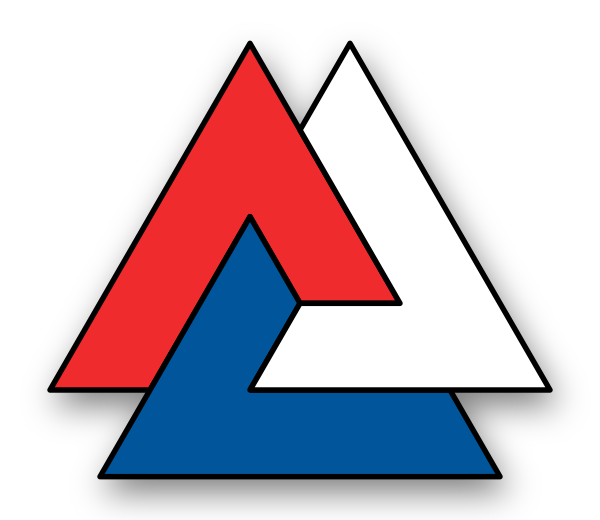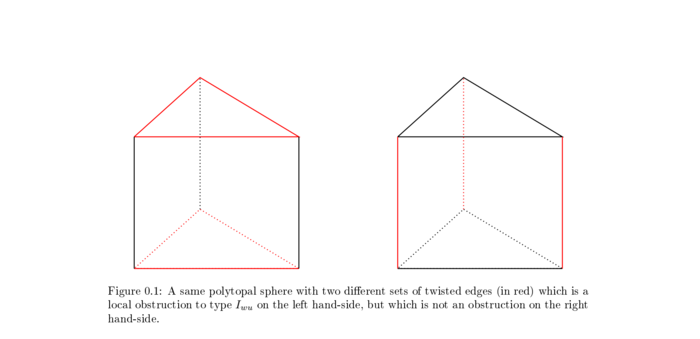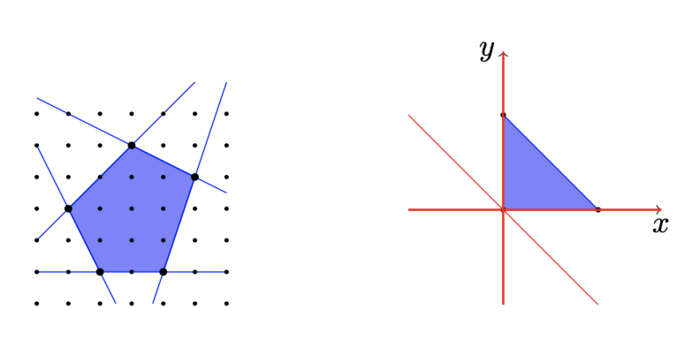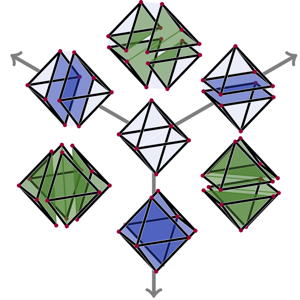Events
Upcoming
The 5th Scandinavian Gathering Around Remarkable Discrete Mathematics
Previous
Abstract: Although tropical vector bundles have been introduced by Allermann ten years ago, very little has been said about their structure and their relationship to vector bundles on algebraic varieties. I will present recent work with Martin Ulirsch and Dmitry Zakharov that changes exactly this in the case of curves: we prove analogues of the Weil-Riemann-Roch theorem and the Narasimhan-Seshadri correspondence for tropical vector bundles on tropical curves. We also show that the non-Archimedean skeleton of the moduli space of semistable vector bundles on a Tate curve is isomorphic to a certain component of the moduli space of semistable tropical vector bundles on its dual metric graph. Time permitting I will also report on work with Inder Kaur, Martin Ulirsch, and Annette Werner and explain some of the difficulties that arise when generalizing beyond the case of curves to Abelian varieties of arbitrary dimension.
Note the non-standard start time!
Abstract: We consider mirror pairs of Calabi-Yau hypersurfaces X and X’ in toric varieties associated to dual reflexive polytopes. We will give a proof through tropical geometry that the Hodge numbers of X and X’ are mirror symmetric. The proof goes by considering tropical homology, and works over the ring of integer numbers. In particular, we can use our spectral sequence with Kris Shaw to explore the connections between the topology of the real part of X and cohomological operations on X’.
This is based on joint work with Diego Matessi.
Donaldson-Thomas and Pandharipande-Thomas theory are two approaches to counting curves on projective threefolds in terms of their moduli spaces of sheaves. An important special case in understanding the DT/PT correspondence the equivariant geometry of affine three-space with the natural coordinate action of the rank 3 torus. I will show how one can use new wall-crossing techniques to prove the equivariant K-theoretic DT/PT correspondence in this situation, which was previously known only in the Calabi-Yau limit.
This is part of an ongoing project with Felix Thimm and Henry Liu in which we aim to prove wall-crossing for virtual enumerative invariants associated to equivariant CY3 geometries by extending a vertex algebra formalism for wall-crossing developed by Joyce.
Gromov—Witten invariants are virtual counts of curves with prescribed conditions in a given algebraic variety. One of the main techniques to study Gromov—Witten invariants is degeneration. The degeneration formula expresses absolute Gromov—Witten invariants in terms of relative Gromov—Witten invariants of algebraic varieties with tangency conditions along boundary divisors.
Relative Gromov—Witten invariants with only one relative marking are relative invariants with maximal contacts along the unique relative marking. The local-relative correspondence proved by van Garrel—Graber—Ruddat states that genus zero relative invariants with maximal contacts are equal to local Gromov—Witten invariants of a line bundle. Local invariants are usually easier to compute. However, The degeneration formula usually involves relative invariants beyond maximal contacts (i.e. with several relative markings). I will explain a generalization of the local-relative correspondence beyond maximal contacts, hence determine all the genus zero relative invariants that appear in the degeneration formula.
This is based on joint work with Yu Wang.
Abstract:
Phase tropical surfaces can appear as a limit of a 1-parameter family of smooth complex algebraic surfaces. A phase tropical surface admits a stratified fibration over a smooth tropical surface. We study the real structures compatible with this fibration and give a description in terms of tropical cohomology. As an application, we deduce combinatorial criteria for the type of a real structure of a phase tropical surface.
Phase tropical surfaces can appear as a limit of a 1-parameter family of smooth complex algebraic surfaces. A phase tropical surface admits a stratified fibration over a smooth tropical surface. We study the real structures compatible with this fibration and give a description in terms of tropical cohomology. As an application, we deduce combinatorial criteria for the type of a real structure of a phase tropical surface.
In 1962 Ehrhart proved that the number of lattice points in integer dilates of a lattice polytope is given by a polynomial — the Ehrhart polynomial of the polytope. Since then Ehrhart theory has developed into a very active area of research at the intersection of combinatorics, geometry and algebra.
The Ehrhart polynomial encodes important information about the polytope such as its volume and the dimension. An important tool to study Ehrhart polynomials is the h*-polynomial, a linear transform of the Ehrhart polynomial which is given by the numerator of the generating series. By a famous theorem of Stanley the coefficients of the h*-polynomial are always nonnegative integers. In this talk, we discuss generalizations of this result to weighted lattice point enumeration in rational polytopes where the weight function is given by a polynomial. In particular, we show that Stanley’s Nonnegativity Theorem continues to hold if the weight is a sum of products of linear forms that a nonnegative over the polytope. This is joint work with Esme Bajo, Robert Davis, Jesús De Loera, Alexey Garber, Sofía Garzón Mora and Josephine Yu.
In 1962 Ehrhart proved that the number of lattice points in integer dilates of a lattice polytope is given by a polynomial — the Ehrhart polynomial of the polytope. Since then Ehrhart theory has developed into a very active area of research at the intersection of combinatorics, geometry and algebra.
The Ehrhart polynomial encodes important information about the polytope such as its volume and the dimension. An important tool to study Ehrhart polynomials is the h*-polynomial, a linear transform of the Ehrhart polynomial which is given by the numerator of the generating series. By a famous theorem of Stanley the coefficients of the h*-polynomial are always nonnegative integers. In this talk, we discuss generalizations of this result to weighted lattice point enumeration in rational polytopes where the weight function is given by a polynomial. In particular, we show that Stanley’s Nonnegativity Theorem continues to hold if the weight is a sum of products of linear forms that a nonnegative over the polytope. This is joint work with Esme Bajo, Robert Davis, Jesús De Loera, Alexey Garber, Sofía Garzón Mora and Josephine Yu.
In this talk we define a new category of matroids, by working on matroid polytopes and rank preserving weak maps. This lets us introduce the concept of categorical valuativity for functors, which can be seen as a categorification of the ordinary valuativity for matroid invariants.
We also show that this new theory agrees with what we know about valuative polynomials: several known valuative polynomials can be seen as a Hilbert series of some graded vector space and we prove that these graded vector spaces let us define a valuative functor in the new sense.
Lastly, we sketch how to categorify a Theorem by Ardila and Sanchez, which states that the convolution of two valuative invariants (respectively, valuative functors) is again valuative.
This is based on a joint ongoing project with Ben Elias, Dane Miyata and Nicholas Proudfoot.
In this talk we define a new category of matroids, by working on matroid polytopes and rank preserving weak maps. This lets us introduce the concept of categorical valuativity for functors, which can be seen as a categorification of the ordinary valuativity for matroid invariants.
We also show that this new theory agrees with what we know about valuative polynomials: several known valuative polynomials can be seen as a Hilbert series of some graded vector space and we prove that these graded vector spaces let us define a valuative functor in the new sense.
Lastly, we sketch how to categorify a Theorem by Ardila and Sanchez, which states that the convolution of two valuative invariants (respectively, valuative functors) is again valuative.
This is based on a joint ongoing project with Ben Elias, Dane Miyata and Nicholas Proudfoot.
Oslo Stability and Enumerative Geometry Workshop 2023
We prove that (logarithmic, Nygaard completed) prismatic and (logarithmic) syntomic cohomology are representable in the category of logarithmic motives. As an application, we immediately obtain Gysin maps for prismatic and syntomic cohomology, and we precisely identify their cofibers. In the second part of the talk we develop a descent technique that we call saturated descent, inspired by the work of Niziol on log K-theory. Using this, we prove crystalline comparison theorems for log prismatic cohomology, log Segal conjectures and log analogues of the Breuil-Kisin prismatic cohomology, from which we get Gysin maps for the Ainf cohomology.
I will discuss the “geometric method” for syzygies and discuss applications to the study of tautological bundles of linear spaces. From this, I will explain how to pass from realizable matroids to all matroids via initial degenerations. This is joint work in progress with Alex Fink and Chris Eur.
A finite graph determines a Kirchhoff polynomial, which is a squarefree, homogeneous polynomial in a set of variables indexed by the edges. The Kirchhoff polynomial appears in an integrand in the study of particle interactions in high-energy physics, and this provides some incentive to study the motives and periods arising from the projective hypersurface cut out by such a polynomial.
From the geometric perspective, work of Bloch, Esnault and Kreimer (2006) suggested that the most natural object of study is a polynomial determined by a linear matroid realization, for which the Kirchhoff polynomial is a special case.
I will describe some ongoing joint work with Delphine Pol, Mathias Schulze, and Uli Walther on the interplay between geometry and matroid combinatorics for this family of objects.
Many have tried to adapt Clemens and Griffiths's approach to irrationality of cubic threefolds to higher dimensions, using different invariants in place of H^3(X,Z): the transcendental part of H^4, derived categories, quantum cohomology... I will report on my attempt to use higher algebraic K-theory, which turns out to be strictly weaker than what Voisin and Colliot-Thélène have already gotten from Bloch-Ogus theory, but (I think) in an interesting way. For a positive result, I can show that the higher K-theory of Kuznetsov's K3 category for a cubic or Gushel-Mukai 4-fold looks the same as that of an honest K3 surface.
I will talk about some new examples of varieties where the coniveau and strong coniveau filtrations are different. This is joint work with Jørgen Vold Rennemo.
Fano manifolds are complex projective manifolds having positive first Chern class. The positivity condition on the first Chern class has far reaching geometric and arithmetic implications. For instance, Fano manifolds are covered by rational curves, and families of Fano manifolds over one dimensional bases always admit holomorphic sections. In recent years, there has been some effort towards defining suitable higher analogues of the Fano condition. Higher Fano manifolds are expected to enjoy stronger versions of several of the nice properties of Fano manifolds.
In this talk, I will discuss higher Fano manifolds which are defined in terms of positivity of higher Chern characters. After a brief survey of what is currently known, I will present recent joint work with Carolina Araujo, Roya Beheshti, Kelly Jabbusch, Svetlana Makarova, Enrica Mazzon and Nivedita Viswanathan, regarding toric higher Fano manifolds. I will explain a strategy towards proving that projective spaces are the only higher Fano manifolds among smooth projective toric varieties.





